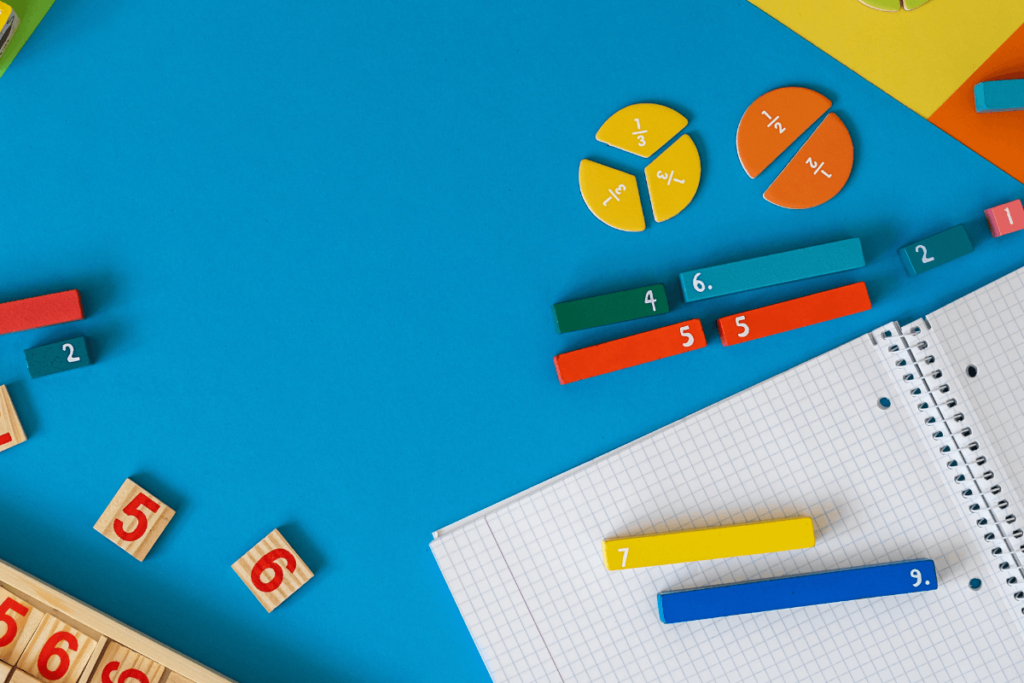Numeracy skills are fundamental to everyday life, enabling individuals to analyze data, solve problems, and make informed decisions. Teaching math effectively goes beyond memorization—it requires building conceptual understanding, problem-solving abilities, and logical thinking.
In this article, we explore the importance of numeracy skills, key strategies for teaching math, and best practices for making math engaging and accessible for all learners.
Why Numeracy Skills Matter

Mathematics is not just about numbers—it is a critical skill used in financial literacy, science, technology, engineering, and everyday decision-making. Strong numeracy skills help individuals:
- Perform everyday tasks – Budgeting, shopping, and time management require math skills.
- Excel academically – Math is a foundational subject for STEM careers.
- Develop critical thinking – Logical reasoning and problem-solving are key components of math.
- Make data-driven decisions – Understanding statistics, measurements, and probabilities improves decision-making.
Without strong numeracy skills, students may struggle with real-world applications, making it essential to teach math in a way that is meaningful, engaging, and practical.
Core Numeracy Skills in Mathematics
To build math proficiency, students need a strong foundation in:
A. Number Sense
Understanding numbers, their values, and relationships.
Counting, place value, and numerical patterns.
📌 Example: Teaching children to recognize numbers using visual aids like number lines and counting blocks.
B. Arithmetic and Operations
Addition, subtraction, multiplication, and division.
Understanding fact families and number properties (associative, distributive, and commutative).
📌 Example: Using hands-on tools like abacuses and counters helps develop basic operations.
C. Fractions, Decimals, and Percentages
Understanding part-whole relationships.
Converting between fractions, decimals, and percentages.
📌 Example: Using pizza slices or pie charts makes fraction concepts more tangible.
D. Measurement and Geometry
Understanding length, weight, volume, and time.
Recognizing and classifying shapes, angles, and symmetry.
📌 Example: Encouraging students to measure objects in the classroom develops real-world connections.
E. Data Analysis and Probability
Reading graphs, charts, and tables.
Understanding mean, median, mode, and probability.
📌 Example: Conducting simple class surveys and representing results in bar graphs strengthens data skills.
F. Problem-Solving and Logical Thinking
Applying math concepts to real-life problems.
Using reasoning skills to solve word problems.
📌 Example: Presenting math puzzles and logic games encourages analytical thinking.
Effective Techniques for Teaching Numeracy Skills
A. Making Math Hands-On and Interactive
Use manipulatives like blocks, beads, and counters.
Incorporate real-life math activities (e.g., shopping budgets, cooking measurements).
Implement STEM-based projects that integrate math into science and technology.
📌 Example: Allowing students to build 3D models enhances spatial reasoning.
B. Teaching Through Storytelling and Games
Use math stories to make abstract concepts relatable.
Incorporate board games and math puzzles to make learning fun.
Play interactive online math games for practice and engagement.
📌 Example: Using “The Grapes of Math” book introduces problem-solving in an engaging way.
C. Encouraging Mental Math Strategies
Teach skip counting and estimation techniques.
Introduce tricks for multiplication and division (e.g., finger math for 9s).
Reinforce mental addition and subtraction strategies.
📌 Example: Teaching students to break numbers into friendly pairs (e.g., 8 + 7 = 8 + 2 + 5).
D. Using Visual Aids and Graphic Organizers
Introduce number lines, charts, and graphs for clarity.
Use Venn diagrams for comparing sets.
Provide color-coded equations to highlight key concepts.
📌 Example: Fraction bars and circle diagrams help visualize fraction relationships.
E. Applying Real-World Math Connections
Relate math concepts to careers (e.g., engineers, architects, accountants).
Use cooking, sports, and travel to explain math applications.
Assign real-life projects like designing a dream house using measurements.
📌 Example: A classroom grocery store helps students apply addition, subtraction, and percentages.
F. Encouraging Growth Mindset and Confidence in Math
Praise effort and progress rather than just correct answers.
Encourage a positive attitude toward mistakes—they are part of learning.
Foster a “math is for everyone” mindset.
📌 Example: Encouraging students to explain their thinking builds confidence and understanding.
Addressing Common Math Challenges
A. Math Anxiety
Create a low-pressure learning environment.
Use games and peer support to reduce stress.
Focus on growth mindset—everyone can improve in math.
📌 Example: Using collaborative group activities builds math confidence.
B. Struggling with Word Problems
Teach students to identify keywords (e.g., “altogether” means addition).
Break problems into smaller, manageable steps.
Use drawings and diagrams to visualize problems.
📌 Example: Using real-world scenarios (e.g., “How many apples are left?”) simplifies word problems.
C. Difficulty Memorizing Math Facts
Incorporate songs, chants, and rhymes for memorization.
Use flashcards and timed challenges to build fluency.
Practice repetition and hands-on activities.
📌 Example: Teaching skip counting songs makes multiplication tables fun and memorable.
The Role of Teachers, Parents, and Schools in Math Education
A. How Teachers Can Support Math Learning
- Use differentiated instruction to meet diverse learning needs.
- Encourage discussion and peer teaching to reinforce understanding.
- Provide real-world math connections to make lessons relevant.
📌 Example: Small-group instruction allows for targeted math support.
B. How Parents Can Support Math at Home
- Encourage math talk in daily activities (e.g., counting, measuring, budgeting).
- Use educational math apps and games for practice.
- Praise effort and make math fun rather than stressful.
📌 Example: Asking children to help measure ingredients in a recipe builds practical math skills.
C. How Schools Can Promote Numeracy Skills
- Develop math-focused extracurricular programs (e.g., math clubs, robotics).
- Provide teacher training in math instructional strategies.
- Integrate technology and hands-on activities into the curriculum.
📌 Example: Schools that implement coding and financial literacy programs enhance real-world math skills.
The Future of Math Education: Technology and Innovation
AI-Powered Tutoring – Personalized learning using AI-based math platforms.
Virtual Reality (VR) and Augmented Reality (AR) – Interactive 3D math experiences.
Data-Driven Learning – Using analytics to tailor instruction to student needs.
Financial Literacy Integration – Teaching students budgeting, investments, and economics.
📌 Example: Virtual simulations allow students to explore math concepts in real-world scenarios.
Conclusion
Building strong numeracy skills is essential for academic achievement, career success, and everyday life. By using hands-on learning, real-world applications, and engaging teaching techniques, we can help students develop confidence and proficiency in math knowledge.
Math is not just about numbers—it’s about problem-solving, critical thinking, and making sense of the world. By fostering a positive learning environment, we can empower students to excel in math and beyond! 🧮📊🚀


